The first boat I built was a kayak that I designed after looking at the drawings of Arctic kayaks in The Bark Canoes and Skin Boats of North America. The kayak got me afloat, but more importantly, taught me how little I knew about boats. The unremarkable appearance, construction, and performance of my kayak set me on a path to see what traditional boats could teach me. Those with a long history, refined by generations of watermen whose livelihoods and very lives depended upon them, interested me most.
Greenland kayaks taught me about the seakeeping abilities of slender, low-profile hulls. They might make for a wet ride but they were hardly bothered by high winds. On stormy days when I saw no other boats venturing out on Puget Sound, I could paddle with confidence through steep breaking waves and stinging spray. My baidarkas, both single and double, showed me how a flexible hull can maintain speed in rough water by yielding to waves. The ancient design of a Gokstad faering proved that a hull formed by only three strakes could be so sleek in the water that its wake could be almost invisible in water scuffed by a light breeze. My sprit-rigged sneakbox may have been designed for waterfowling, but showed it could jump on plane and fly.
I pushed those boats and others hard to see what they could do, and at the same time I was discovering what I was capable of. They helped me come to terms with self-doubt, fear, discomfort, and, on the long cruises, even loneliness.
I built all of those boats while I was in my 20s and 30s when I was as strong as I would ever be. I was rarely outpaced by anyone whether I was paddling, rowing, or bicycling. At 68, I still like to push hard, but I’m not as fast and I don’t have the same endurance. I get passed frequently. I’ve adjusted my expectations but not by letting go of the effort to go farther or faster. I ride my bike through neighborhood side streets to avoid the younger, faster cyclists on the bike paths. And I built a coracle, a boat that is incapable of high speed or great distance.
A few years ago, I’d made a folding coracle-like tender for my little sail-oar-motor cruiser and had grown to like the feel of a boat so small that none of it is beyond arm’s reach. It was an awkward boat to propel—a standard canoe stroke spins it in circles—until I discovered the slash-and-pull paddle stroke seen in films of coracles from the 1930s. The traditional form of the coracle has its origins even farther back to pre-Roman times, more than 2,000 years ago, and consists of bent saplings, usually willow or hazel, interwoven or lashed together and covered with an animal hide. To see what I could learn from that ancient design, I decided to build one.
I knew of a local plant that grows in tall, mostly straight shoots. I harvested some decades ago, first for making arrow shafts for obsidian arrowheads I’d made and later for the 43 frames I needed for building an Aleut baidarka. I didn’t know back then what species the plant was and only recently had an arborist identify it as beaked hazel by a leaf I brought to her nursery. I looked it up on the web and learned the ways I’d used the shoots have been traditional uses: “Twisted twigs were used to tie things. Stems were used for weaving baskets and fish traps. Straight stems were used for arrows.” In the British Isles, another species, common hazel, was used for making the oversized baskets that are coracles.
The beaked hazel in the woods around here grows on south-facing hillsides. Each cluster had new growth, mature shoots suitable for harvesting, and leafless standing dead shoots. For the coracle I cut shoots that were between 1/2″ and 7/8″ at the base. A ratchet pruner was the only tool I needed for the harvest. The pruner was also the only tool I really needed to build a coracle.
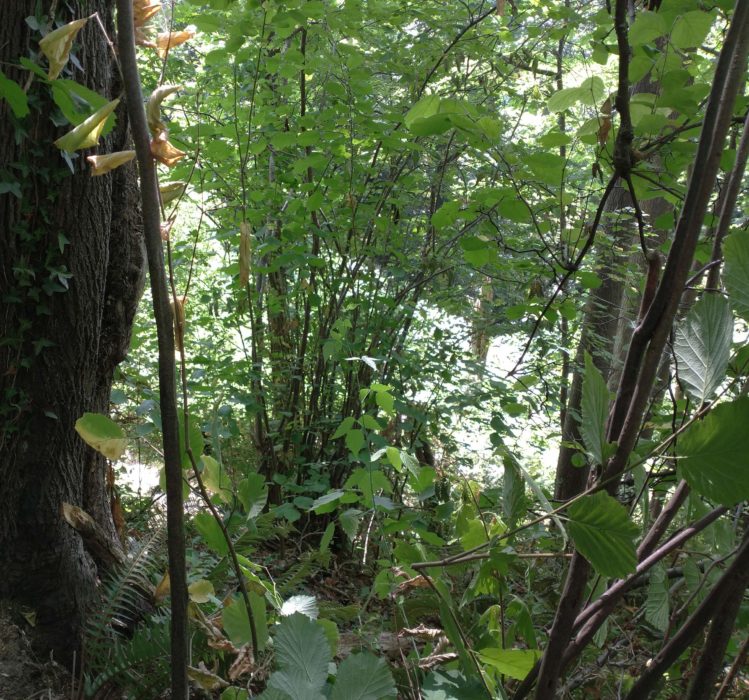
The stems in the foreground and the cluster beyond them are beaked hazel. Growing in the shade of large trees, like the trunk at left, the hazel doesn’t grow much higher than 12′. The leaf at right center has the sunlight brightening its underside. There is a soft velvety fuzz on the bottom of the leaves, making them easy to identify.
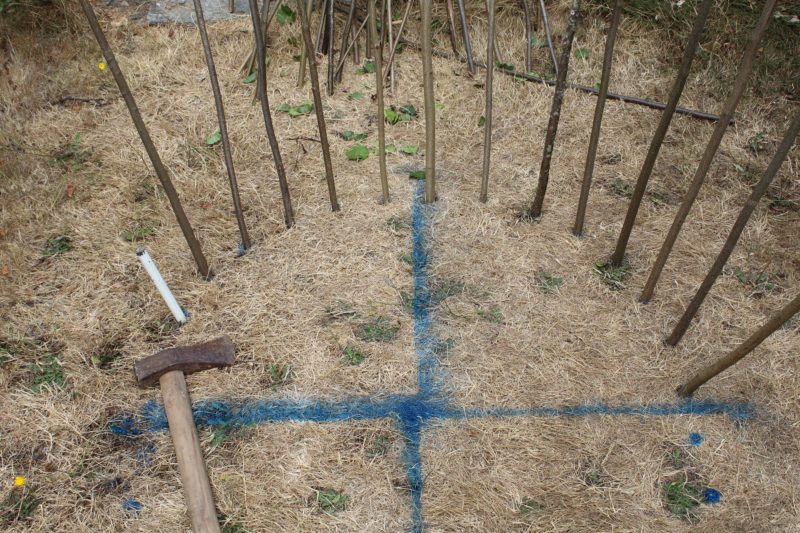
My lawn was too sun-baked to make it possible to sharpen the ends of the stems and push them into the ground. A galvanized water pipe and a splitting maul did the job. The holes get driven in at an angle to make the stems fan out away from each other. This is in the style of the coracles built for the River Boyne, north of Dublin, Ireland.
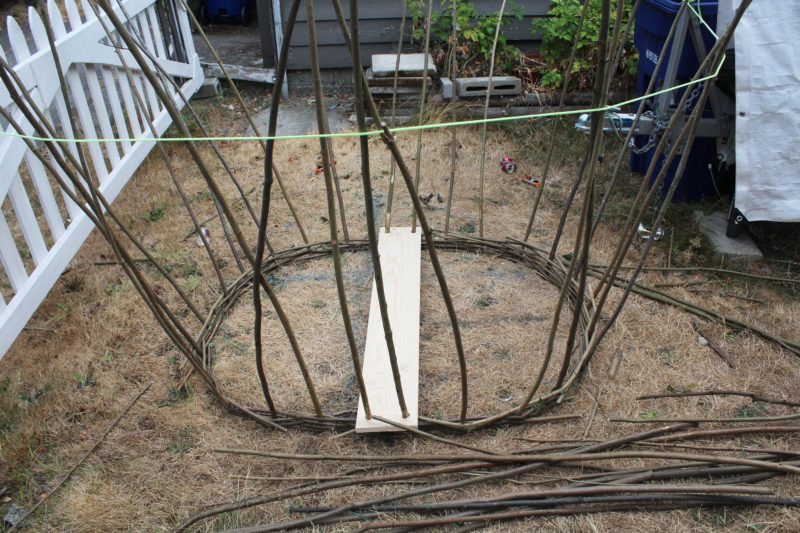
Thinner stems are woven around the base of the uprights to make the “gunwale.” The spacing of the stems was not clear in the book I consulted, and the 32 called for by the 4-1/2′ x 3-1/2′ ended up with a 4-3/4″ spacing, much too close to get the weavers at the sheer bent in without breaking. I redid the pattern with a spacing of about 6-3/4″ and made a new set of holes. Halfway through the process, the seat, with 7/8″ holes drilled in the corners, gets installed on the four stems amidships.
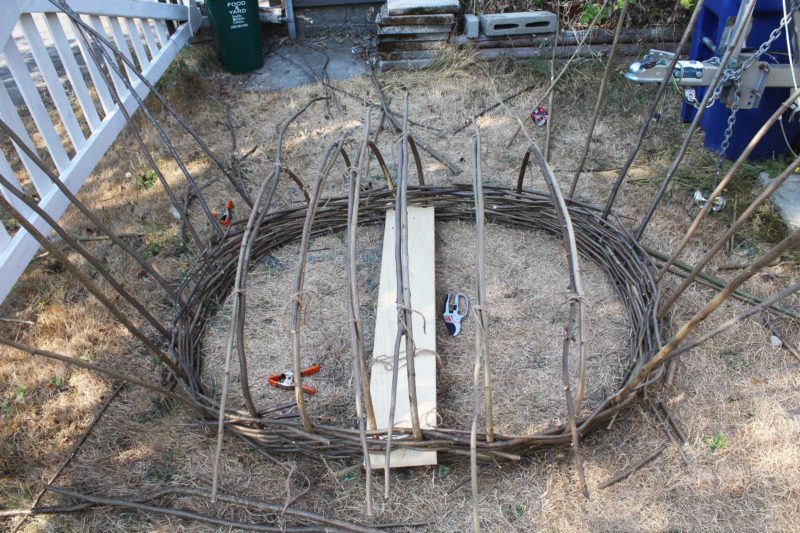
After the gunwale weavers lock the thwart in, the transverse stems get bent toward each other. I tied them temporarily with jute twine. Eventually the ends will get trimmed and tucked into the weaving alongside their partners. The pruning shears by the thwart were the only tool I really needed to make the frame from harvesting the hazel to cutting the twine.
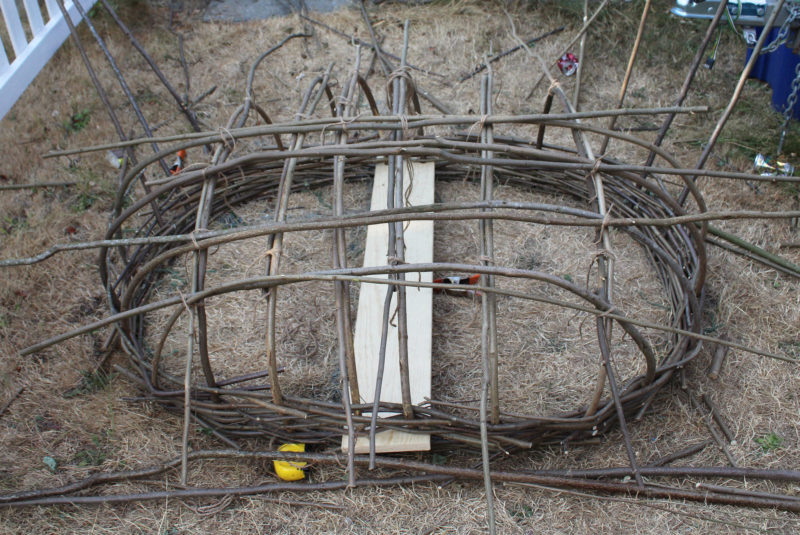
The longitudinal stems get bent second. Some coracles have them woven in, over and under the transverse stems, but I think that requires material much more limber than what I had.
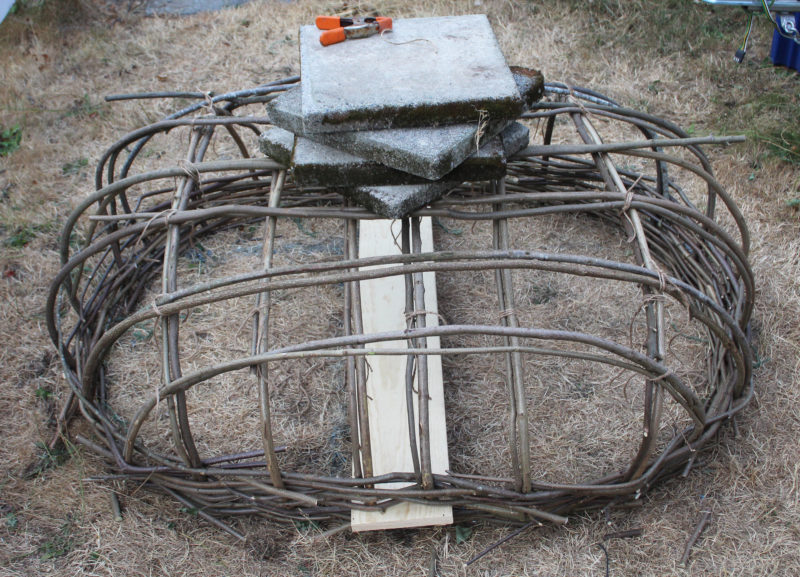
The hazel wants to bend in even, nearly circular arcs. That hull form would be unstable, so to flatten the hull I stacked 16″-square concrete pavers on it. Each paver weighs roughly 33 pounds, so the unlashed hull could already support 132 lbs.
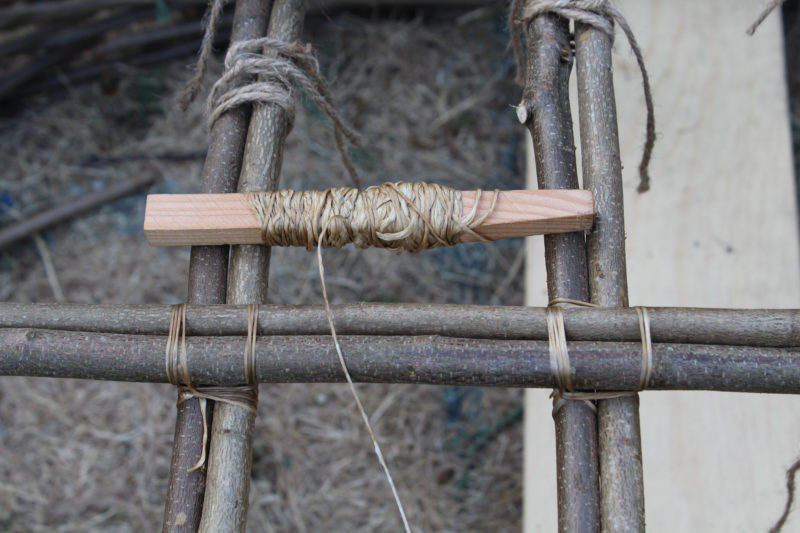
So-called square lashings of artificial sinew hold the transverse and longitudinal frame members together, smoothing the shape of the hull and making it markedly stiffer.
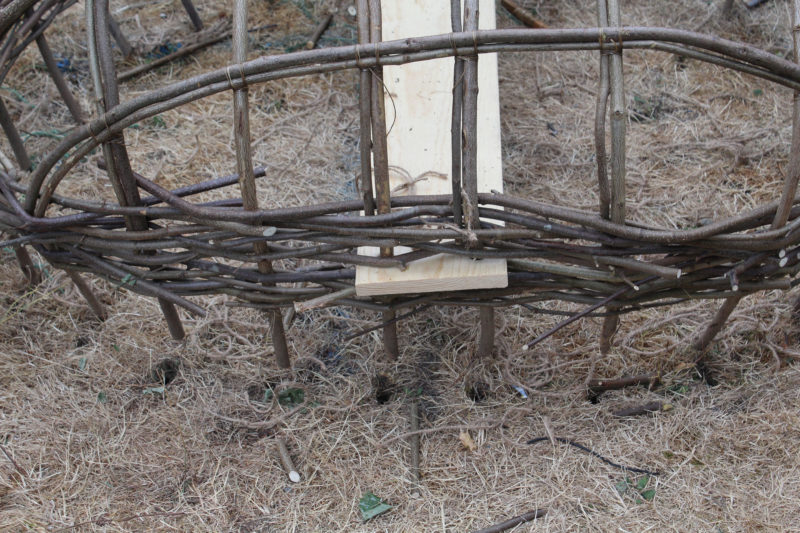
A firm pull on the frame loosened it from the ground. I’ve never aerated a lawn before, but I imagine it might look a bit like the holes left by the frame. I may have to build a lot more coracles to get a vibrant green lawn.
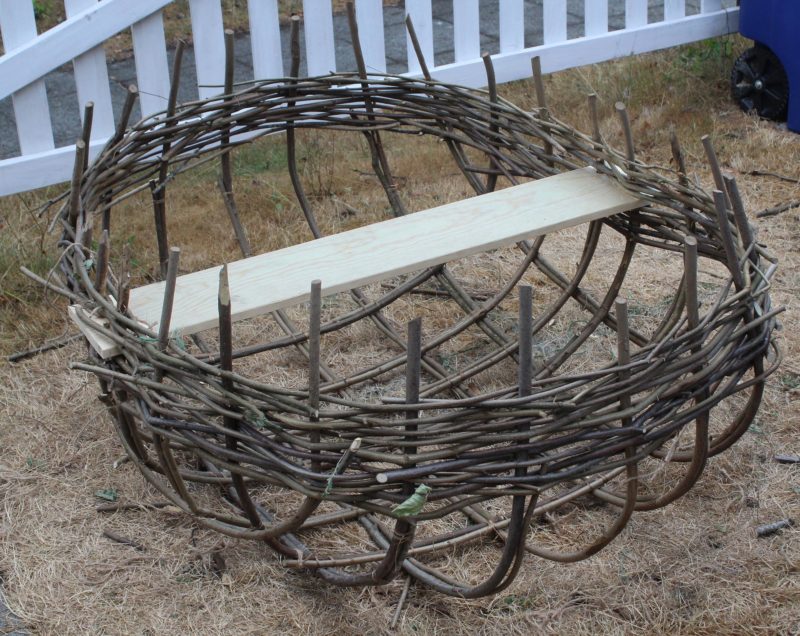
Set upright, the coracle shows that the angled holes in the ground for the frame pieces had given the frame a tumblehome all around. I assume that’s to make it easier to reach the water with a paddle. This is the only time I’ve finished a hull that still had a leaf (center bottom) attached to the wood I used.
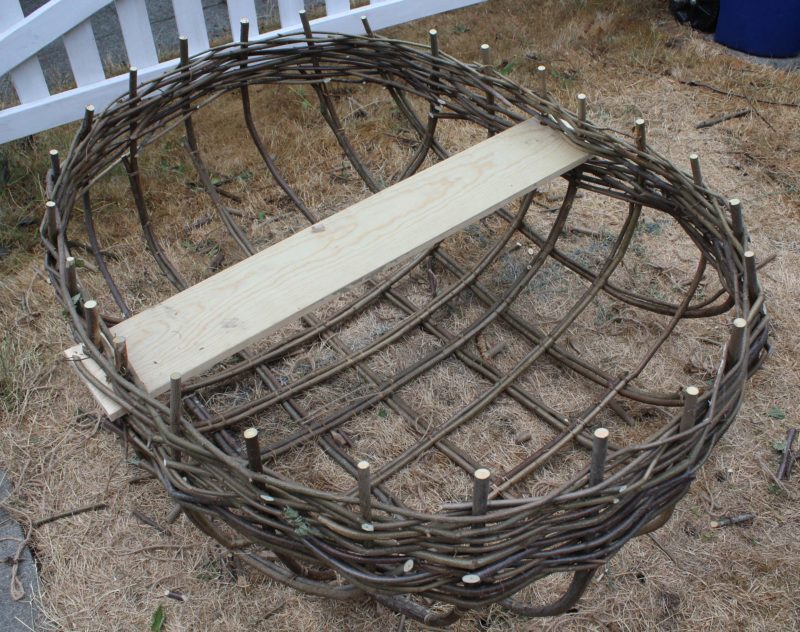
I cut the ends of the frame pieces three finger-widths above the woven perimeter. The extra length will later get a weaving of willow to make a finished edge.
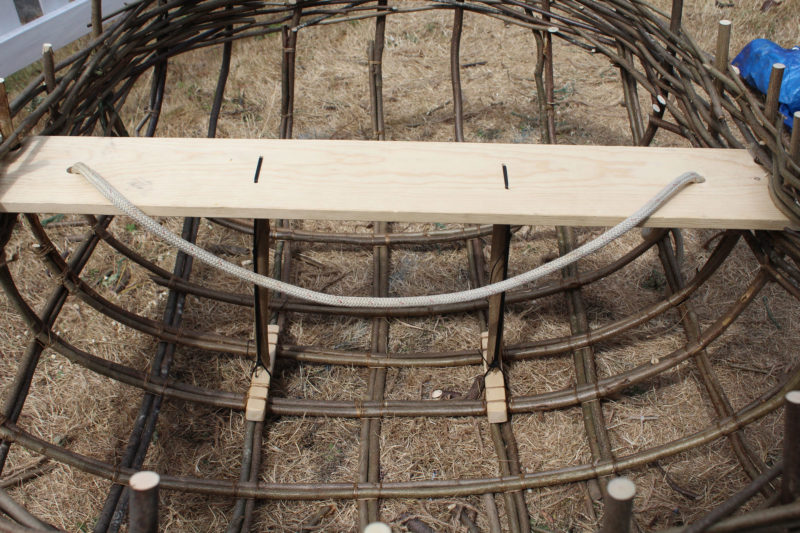
Coracle seats are usually supported by posts extending to the hull. I used two thick lengths of hazel that fit in blind 7/8″ holes in the bottom of the seat and in blocks that span the central ribs. A lashing from the hull to the seat, seen as the black lines on the seat, keep the posts in place and the flattened curve of the bottom from rounding itself away from the seat. The rope is for carrying the coracle. With the seat across the back, the rope is snug across my shoulders and chest.
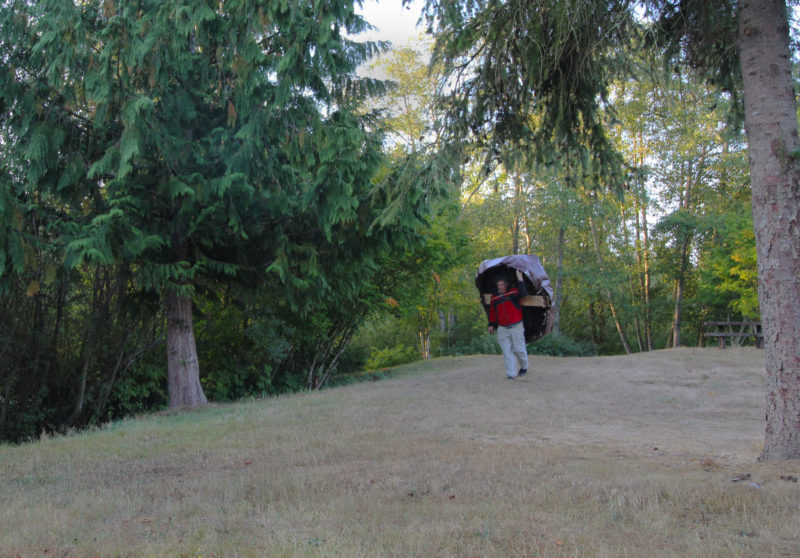
Coracles are meant to be portaged. Mine, with the temporary tarp skin, weighs just 34 lbs. so it wasn’t a burden to carry it the 100 yards across the Chase Lake Park from the truck to the pond.
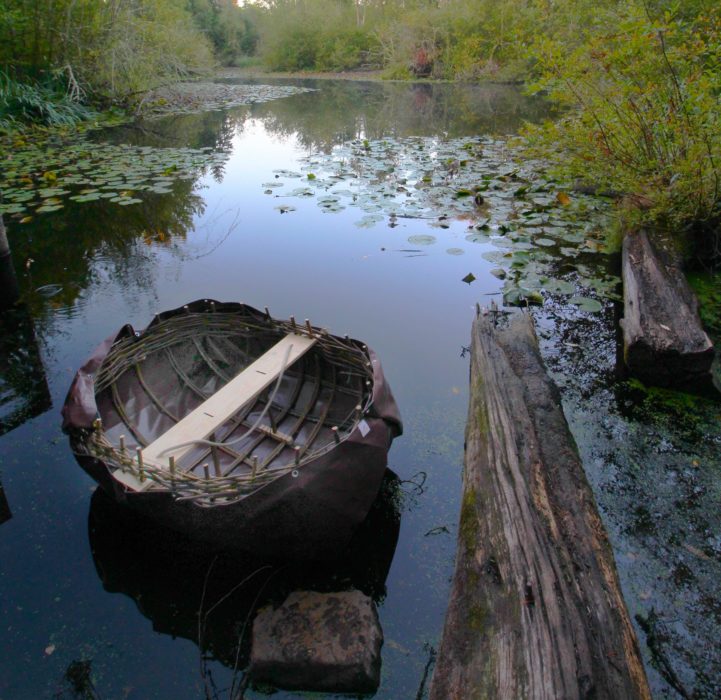
To get afloat in the newly finished frame I lashed a heavy-duty 16 mil poly tarp over it. A canvas skin coated with black roofing sealant will come later along with a paddle meant for coracles.
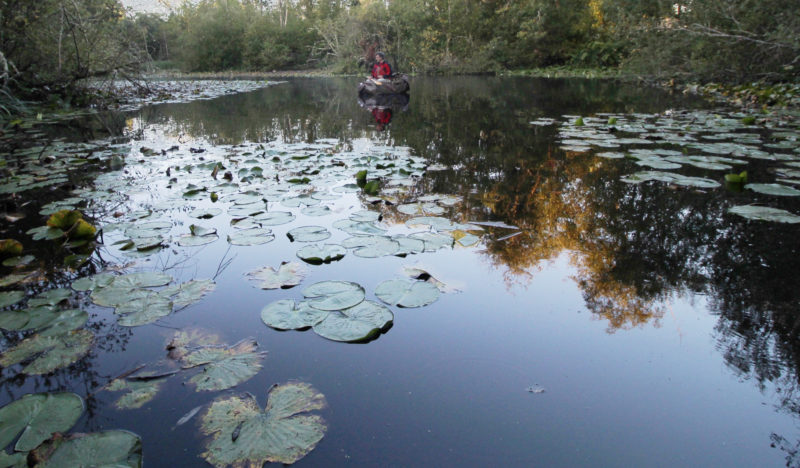
When I started building boats, I was driven to travel in them hundreds, even thousands of miles, from one point to another. Now, 43 years later, I’m looking for small places, where I can take my coracle to find the single point at its center and not pass it by.
This project is not yet finished, but I’m already scanning Google Earth for nearby ponds and creeks where I can take my coracle, the smallest of small boats, to see what it can teach me about its ancient ancestors and the not-quite-as-old version of myself that I’ve become.

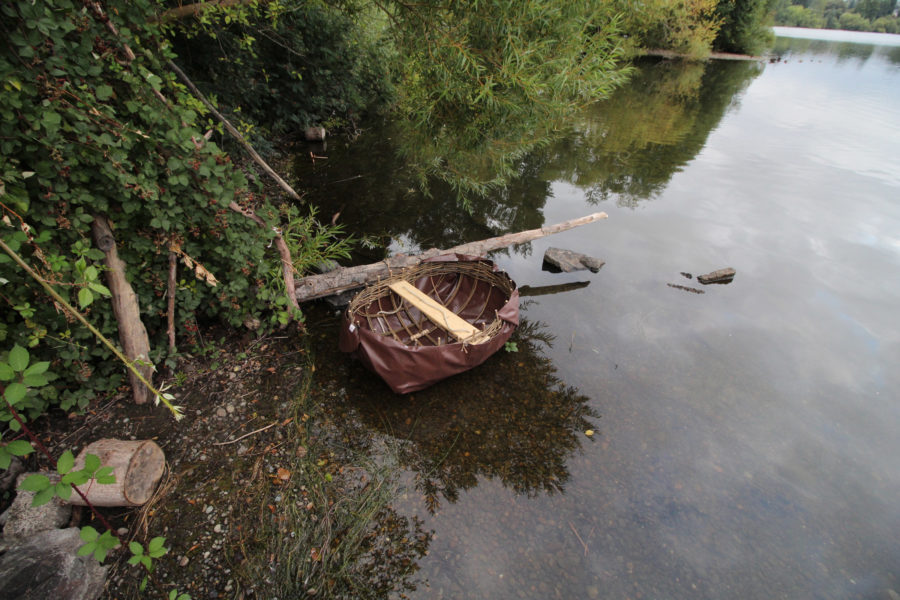
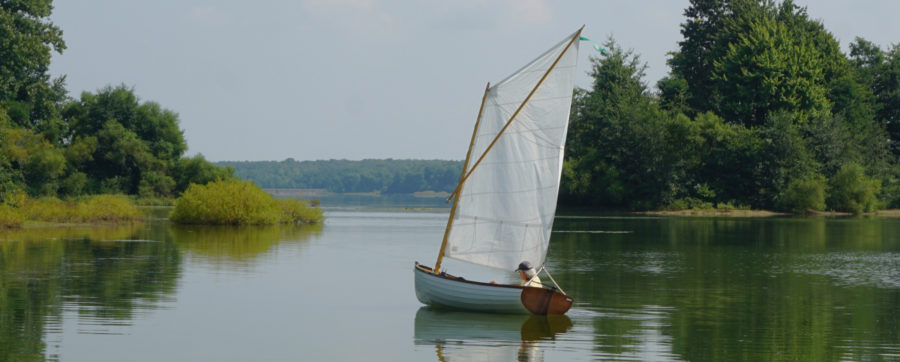
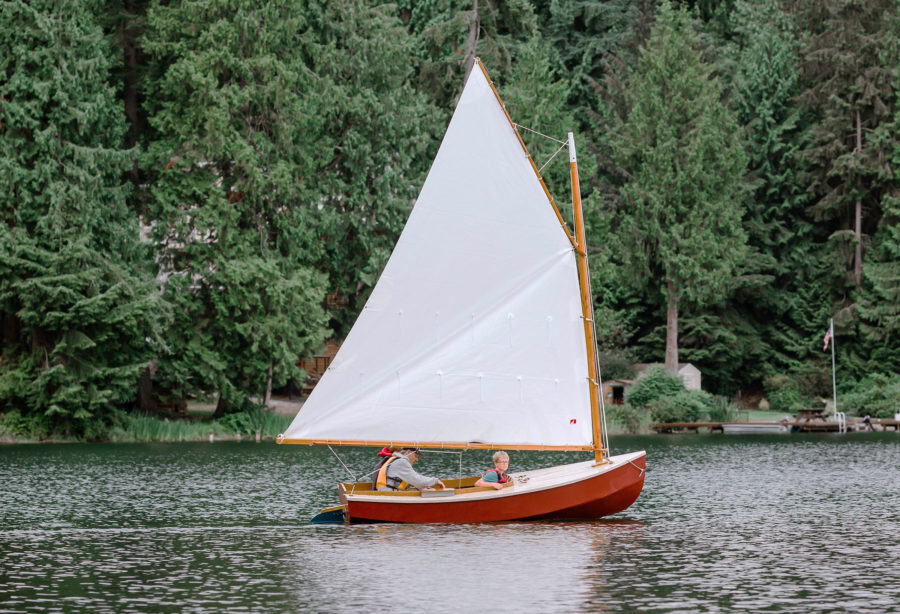
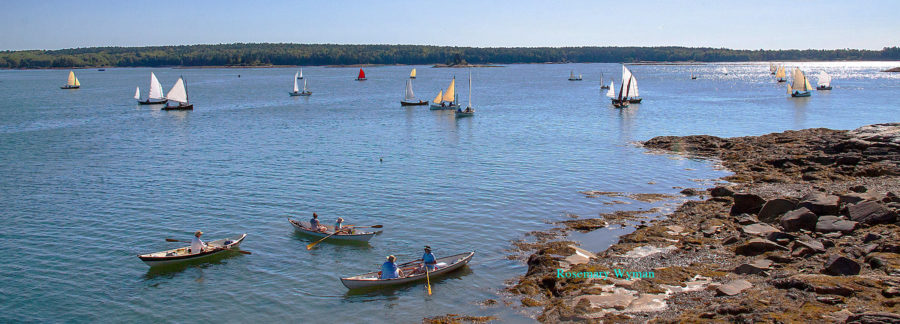
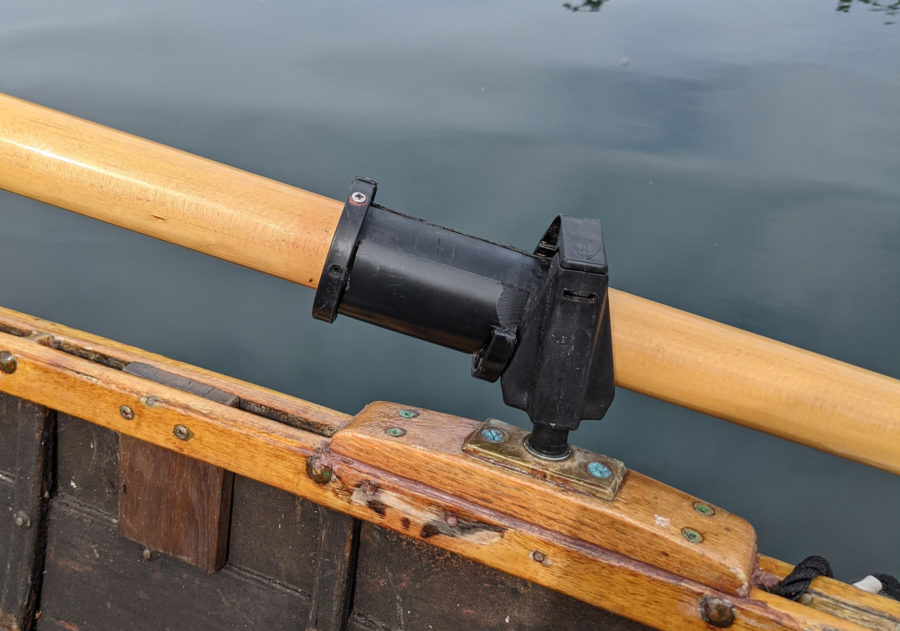
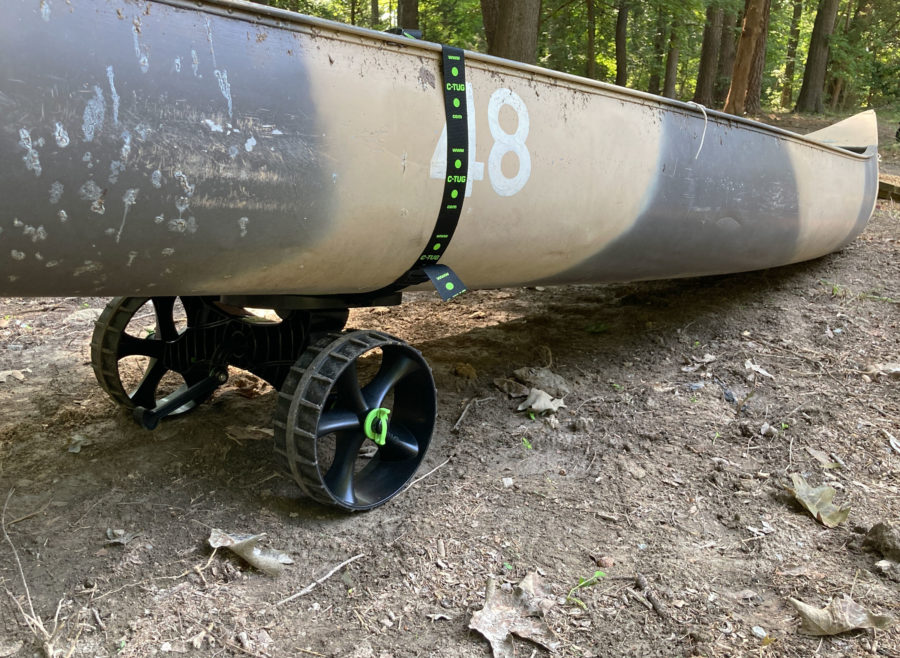
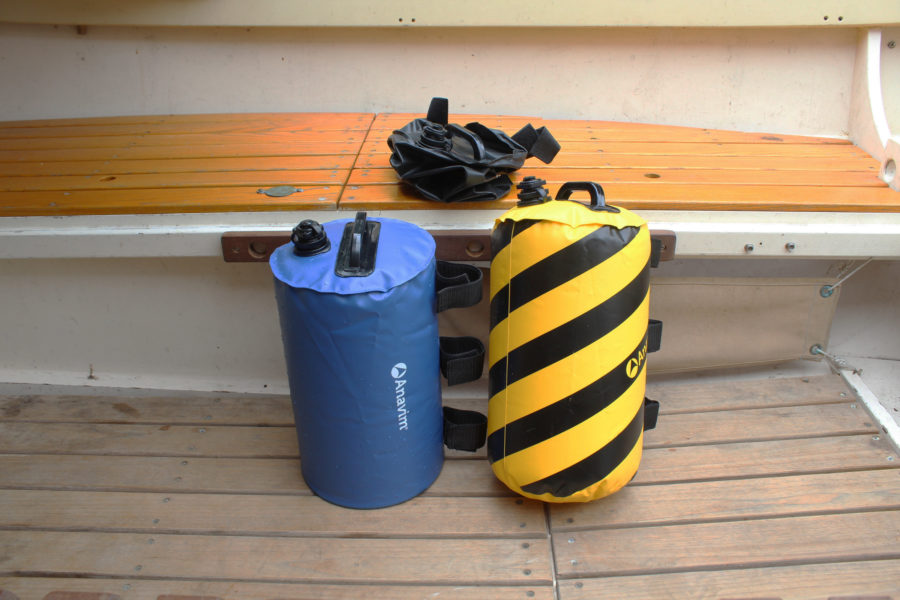
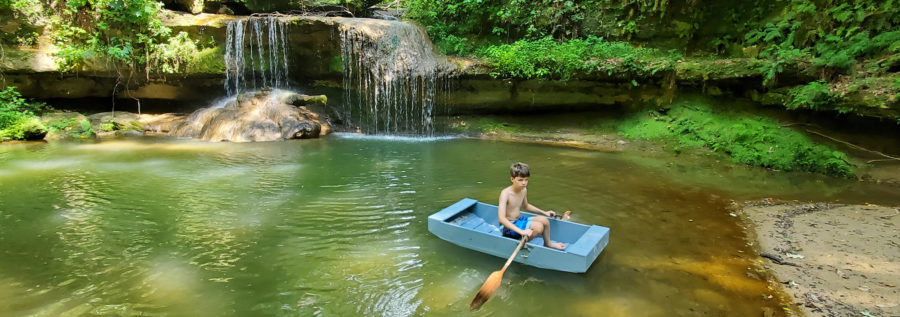
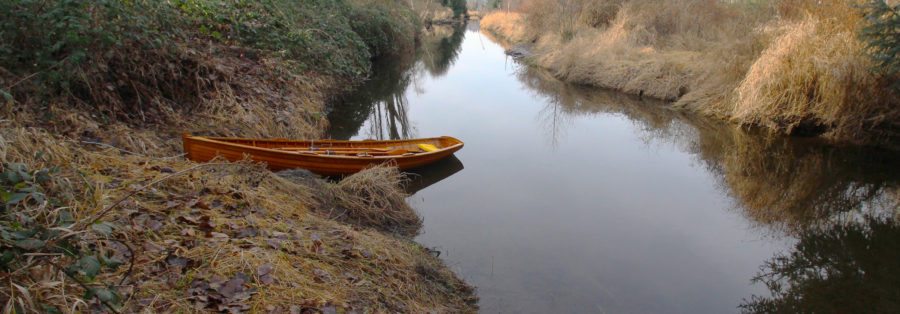
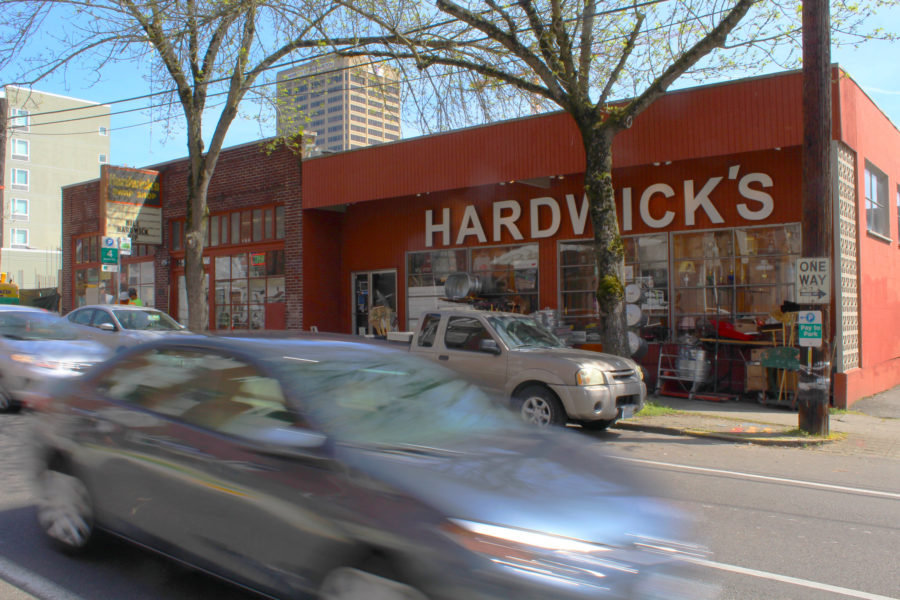
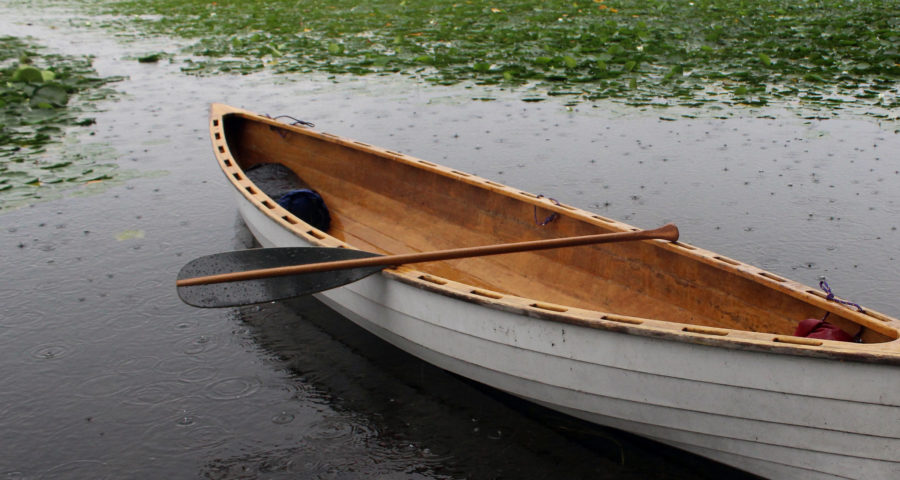
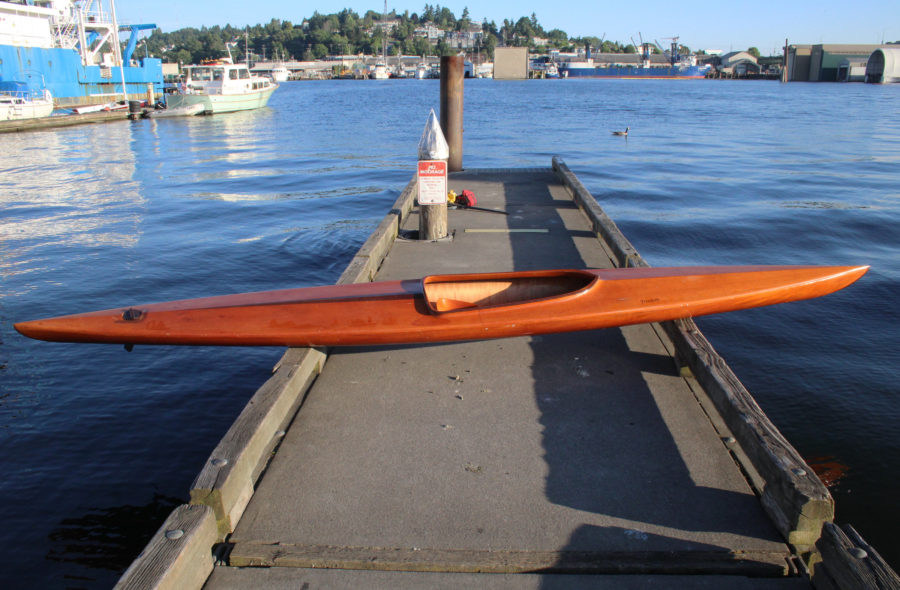
Excellent story. It’s a great reminder to treat boat building as a fun exploration, not a pursuit of Old Timer Craftsmanship perfection.
A fascinating read and the step-by-step photos make for an informative and interesting review of your research and knowledge. Not all boats are a picture of perfection but are perfect for their intentions.
Years ago a friend (re-?) discovered and introduced me to the art of stream tuning: one listens to a stream, and then rearranges the rocks to make different music.
As occupations go it leaves little to be desired.
I think that the business of “looking for small places, where I can take my coracle to find the single point at its center and not pass it by” needs similar appreciation.
Very cool. Makes we want to go out and find a willow patch and give it a go. Reminds me of a recent video I saw on Youtube exploring the idea that Noah’s Ark was round. Even if you aren’t religious, it was interesting to see how large a boat he was able to build and how much weight it could carry.
Very interesting, Chris. I look forward to seeing the final steps in the construction. By the way, I’m not familiar with the “slash-and-pull paddle stroke”. Can you explain this or point me to an explanation?
When I first paddled FAERIE, a folding coracle I designed for use as a tender,
I used a zig-zag sculling stroke at first but later discovered a different stroke in old films: Boyne Coracle, A Bygone Craft, and Peeps though a Window of the World. The sculling stroke was used, often with one hand, for maneuvering, but for forward speed the coraclers used a draw stroke with the blade slashing in an out of the water from one side. This technique provides much more power. I believe it is called a C stroke, through it is not the same as the canoeing stroke of the same name.
Thanks. Delightfully British! Those films are interesting, too, because they show two different techniques for building the frames.
Reminds me of a similar craft used by a local fisherman about 60 years ago. it was a simple “boat” consisting of three components: a #3 galvanized washtub, a 1x board, and a tractor inner tube. The board was ripped to a width that would just fit through the upturned handles of the tub and cut to a length nearly as long as the inflated diameter of the inner tube. It kept the tub from pushing through the inner tube. He had gotten a used tube with many patches from a local dealer.
He had been retired for several years and said it was a lot easier to load into the back of his pickup than the wooden john boat he had been using. He used it to run trot lines, set lines, and jugs in the local river.